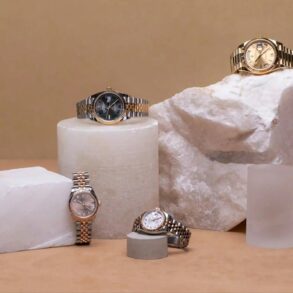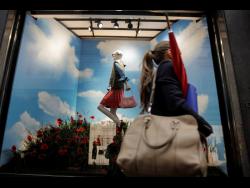Are luxury items still worth investing in? Annual returns on wine, cars and handbags are slowing as collectors feel the pinch – but you CAN still make a profit on art (so long as the artist is female)
They are typically referred to as ‘investments of passion,’ allowing collectors to make money out of their interests.
But is the era of luxury asset investing coming to an end? Cash returns on handbags, wine and cars over 12 months are starting to slow – while rare whiskey bottles and champagne are seeing their worth decline in value.
It has led experts to recommend that investors focus on goods that bring them ‘joy’ as value appreciation is no longer guaranteed.
Despite this, art pieces are still seeing healthy returns – with creations by women experiencing the biggest surge in value over the last decade.
The findings, from the Knight Frank Luxury Investment Index (KFLII), lay bare the extent to which rampant inflation and higher interest rates are battering investments.
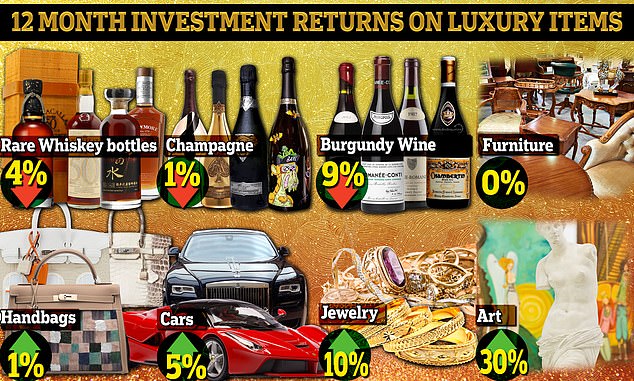
The index tracked the value of the ten most popular collectibles – including jewelry, art and furniture – and found their worth had increased by 7 percent on average in the year to the end of July.
It marked the weakest annual performance from the recurrent study since the second quarter of 2021 – when the US was in lockdown.
The trend has been blamed on wider economic turmoil which is deterring would-be investors from parting with their cash.
But art investments have remained relatively steady, with pieces increasing by 30 percent in value over 12 months.
Researchers noted this is more symbolic of ‘the post-pandemic recovery period rather than a market in robust health.’
But pieces specifically by women have seen their value shoot up by 163 percent in the last ten years.
Female artists saw the bulk of this growth between 2016 and 2019 – a period which coincided with powerful social change movements such as ‘#metoo,’ the report said.
In all, asset investments were still seeing huge returns over ten-year periods. For example, the value of luxury art pieces shot up 109 percent in the last decade while rare whiskey bottles saw their value shoot up by 322 percent.
But the slowing of annual investment returns shows tentative signs of a cooling in the market.
For example, the average bottle of investment-grade champagne had fallen by one percent in the last year while a bottle of Burgundy had fallen by nine percent.
Similarly, rare whiskey bottles had declined by four percent and handbag values had only increased by one percent.
Commenting on the report, Nick Martin, of Wine Owners, said sales were stagnating because prestige prices were ‘testing’ consumers.
He added: ‘When interest rates have risen sharply to around six percent, new releases in particular new releases [of wine] should be offered at a bigger discount to convince consumers to spend on wine instead of holding cash.’
Similarly, Liam Bailey, Global Head of Research at Knight Frank, said: ‘Economic uncertainty and higher interest rates are casting a long shadow.
‘Experts in various asset classes quoted in the update say growth in their market is slowing or that declines have further to run.’
He added that focusing on the ‘joy’ of owning a collectible item is ‘perhaps more important now that value appreciation is far from guarantees.’
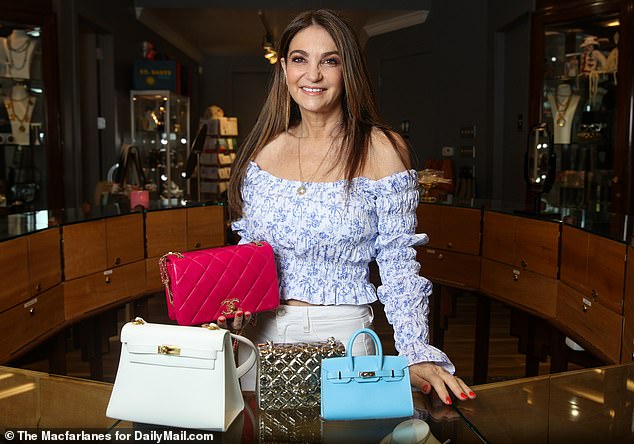
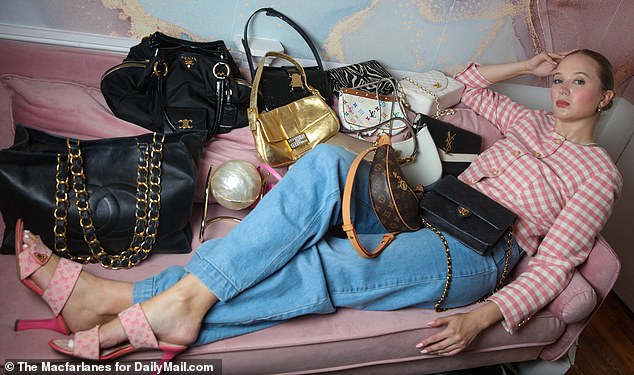
The report defines a luxury item as a commodity that is bought and sold on accessible trading platforms – allowing their value to increase to increase in the long-term.
It adds: ‘Second, and crucially, collecting the asset class in question must be enjoyable regardless of any change in value. If no passion is involved, if the joy of ownership doesn’t make up for any potential drop in value, then it’s just another investment.’
It comes after Dailymail.com revealed that a growing number of ‘handbag investors’ were emerging who claimed to make more money from their purses than they would on the stock market.
Analysts at Credit Suisse found that the average value of designer purses had shot up 92 percent in the last decade.
Former professional poker player Beth Silverburg claims to have made $100,000 from buying and selling purses from brands such as Chanel, Hermès and Louis Vuitton.
‘My first ever bag was a Louis Vuitton 30 Speedy which I bought for $150 from the tips I made waitressing,’ the 55-year-old, from Pennsylvania, told Dailymail.com.
‘I flipped mine for around $600 years ago – but they’re worth $1,500 now.
‘I’ve always invested in stocks and shares but my bags have far superseded anything I’ve made the traditional way.’
Similarly, influencer Steffie Price keeps a careful eye on designer bag costs and frequently posts videos explaining the investment value of purses.
The 29-year-old New Yorker knows all too well how useful these investments can be after she was forced to sell four of her purses during the pandemic when her income all but dried up overnight.
She made $5000 each on two of her Chanel classic flap bags – which she had bought for $2,000 and $3,000 respectively.
On top of that she also sold a small Dior bag for $800 and a Louis Vuitton for $2,000. She had bought the latter for $1,500.
Price told Dailymail.com: ‘When lockdown happened, a lot of brands stopped spending money on marketing so I suddenly found myself without an income.
‘It’s nice to know that if I’m ever desperate for money I’m sitting on around $30,000 worth of bags.’
This post was originally published on this site be sure to check out more of their content.


